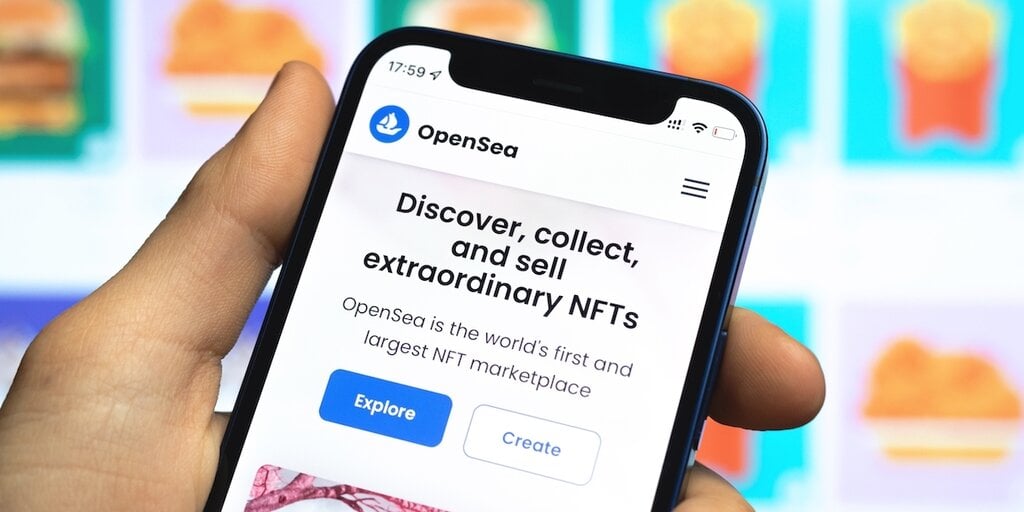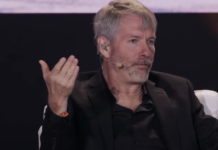In its latest pivot on the subject, marketplace OpenSea announced Thursday that it will soon stop enforcing creator royalty fees on secondary sales of NFTs—a development that will impact artists and teams who receive passive income when their work trades hands following the initial sale.
Beginning August 31, artists who list new projects on OpenSea will not be able to require buyers to pay a creator fee—a charge, typically ranging from 2.5% to 10%, that’s tacked on to secondary sales of NFTs and pocketed by creators. Artists will now only be able to indicate their preferred creator fee, which buyers can choose to pay effectively as a tip.
Existing collections on non-Ethereum blockchains, and projects that opted to use OpenSea’s Operator Filter—a controversial tool that prevented collections from being sold by competing platforms that themselves made creator fees optional, and rewarded that loyalty with enforced creator fees on OpenSea—will be able to guarantee creator fees until February 29, 2024.
At that point, NFT creator fees will be fully optional, platform-wide.
“To be clear, creator fees aren’t going away—simply the ineffective, unilateral enforcement of them,” OpenSea co-founder and CEO Devin Finzer said in a company blog post this afternoon.
OpenSea declined to comment Thursday when contacted by Decrypt.
Today’s development marks the latest shift in a long-escalating disruption of the NFT industry, one spurred by the arrival last fall of upstart NFT marketplaces that slashed creator royalties.
Some, like leading marketplace Blur, generated massive amounts of trading volume with the gamified deployment of lucrative token airdrops that were valued in the hundreds of millions of dollars and benefited loyal users.
In a November 2022 interview with Decrypt, Finzer defended OpenSea’s decision at the time to stick with creator royalties and enforce them, despite the emergence of competing platforms that undercut such artist protections. At the time, he pointed to OpenSea’s “leadership in the space” in support of creators.
Though OpenSea had reigned for years as the unchallenged behemoth of NFT marketplaces, Blur’s aggressively free-market approach soon upended that status quo. By February, Blur overtook OpenSea as the top NFT trading platform by trading volume, prompting OpenSea to reduce its royalty fee protections to remain competitive.
OpenSea’s elimination of enforced creator fees altogether signals the company’s enduring struggle to retain users in the face of challengers who are content to do away with certain cultural norms in the crypto community—namely, the prioritization of the rights of creators.
In response to OpenSea’s announcement, other NFT marketplaces that still enforce creator royalties took the opportunity to lambast the decision. Notable NFT artists and project creators have also taken to social media to rebuke the move.
“Royalties on secondary sales are fundamental to the NFT art revolution… [and] core to artist sovereignty, and the future of this movement,” SuperRare co-founder and CEO John Crain said in a statement. “It’s unfortunate to see a trend going back on this as an industry.”
Several matters beyond creator royalties further complicate OpenSea’s fate. For one, the company still takes a 2.5% platform fee from every NFT transaction; Blur levies no such fee. The more recent OpenSea Pro version of the marketplace skips the platform fee, however, albeit with conditions tied to paying creator fees.
Furthermore, NFT marketplaces are fighting more and more aggressively over a steadily shrinking pie. OpenSea has generated about $82 million worth of trading volume in the last month, while Blur has generated $271 million in the same period, according to DappRadar. Just months ago, in March, those figures were $424 million and $1.35 billion, respectively.
Stay on top of crypto news, get daily updates in your inbox.









